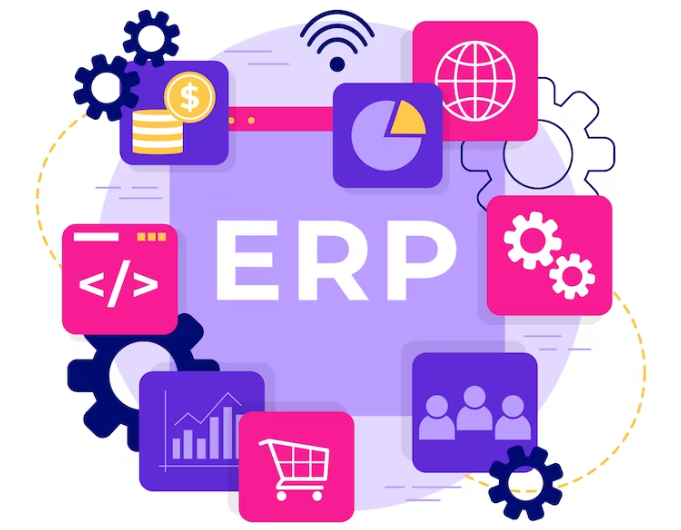
A. Definition and Overview
Acumatica ERP is a cloud-based, integrated business management solution designed to empower organizations with flexible and scalable tools for managing various aspects of their operations. This section provides an in-depth definition and overview of Acumatica, highlighting its cloud-native architecture and the core functionalities that set it apart in the ERP landscape.
B. Evolution of Acumatica ERP
The evolution of Acumatica ERP is essential to understanding its capabilities and the technological advancements that have shaped its development. This subsection traces the historical journey of Acumatica, from its inception to its current position as a leading player in the ERP market.
II. Key Features of Acumatica ERP
Acumatica ERP is distinguished by its feature-rich architecture, addressing the diverse needs of modern businesses. This section breaks down the key features that define Acumatica and explores how they contribute to its effectiveness as a comprehensive business management solution.
1. Cloud-Native Architecture
The cloud-native architecture of Acumatica is a fundamental aspect of its design. This subsection delves into the benefits of a cloud-based approach, including scalability, accessibility, and the ability to adapt to evolving business needs.
2. Flexible Deployment Options
Acumatica offers flexibility in deployment, allowing organizations to choose between public cloud, private cloud, or on-premises installations. Explore how this flexibility caters to different business requirements and IT preferences.
3. Comprehensive Financial Management
Financial management is a cornerstone of Acumatica ERP. This component discusses how Acumatica streamlines accounting, budgeting, and financial reporting, providing organizations with accurate and real-time financial insights.
4. Project Accounting and Management
For organizations engaged in projects, Acumatica’s project accounting and management capabilities are crucial. This part explores how Acumatica facilitates project tracking, resource allocation, and collaboration for enhanced project success.
III. Industry Applications of Acumatica ERP
The versatility of Acumatica extends across various industries. This section explores how Acumatica is applied in different sectors, including manufacturing, distribution, retail, and services, showcasing its adaptability to diverse business environments.
A. Manufacturing Industry
Discover how Acumatica addresses the specific needs of the manufacturing sector, from inventory management to production planning, fostering operational efficiency and responsiveness.
B. Distribution and Supply Chain Management
Explore the role of Acumatica in optimizing distribution and supply chain operations, ensuring timely deliveries, minimizing stockouts, and enhancing overall supply chain visibility.
C. Retail Management
For the retail industry, Acumatica offers tailored solutions for inventory control, order processing, and customer relationship management. Delve into how retailers leverage Acumatica to enhance customer experiences.
D. Service-Based Businesses
In service-based industries, Acumatica aids in project management, resource allocation, and service delivery. This component discusses how service-oriented businesses leverage Acumatica for improved operational efficiency.
IV. Implementation Strategies for Acumatica ERP
Implementing Acumatica ERP involves careful planning and execution. This section outlines key strategies for a successful Acumatica implementation, covering considerations such as data migration, user training, and customization.
A. Data Migration Best Practices
Effective data migration is critical for a seamless transition to Acumatica ERP. Explore best practices for planning and executing data migration, ensuring accuracy and integrity throughout the process.
B. User Training and Change Management
User adoption is pivotal for the success of any ERP implementation. This part emphasizes the importance of comprehensive user training programs and effective change management strategies to facilitate a smooth transition for employees.
C. Customization for Business Specificity
Acumatica’s flexibility allows for customization to align with specific business needs. This subsection delves into the customization options offered by Acumatica and how organizations can tailor the system to suit their unique requirements.
V. Advantages of Acumatica ERP Adoption
Adopting Acumatica ERP brings forth a multitude of advantages for organizations seeking a modern and scalable business management solution. This section systematically outlines these benefits, showcasing how Acumatica positively impacts various facets of organizational management.
A. Cost-Effectiveness and Scalability
Explore how Acumatica’s subscription-based model contributes to cost-effectiveness, and its scalable architecture allows organizations to adapt to changing business demands without significant additional costs.
B. Real-Time Insights for Informed Decision-Making
Acumatica provides real-time insights, enabling informed decision-making. This subsection discusses how organizations leverage Acumatica to access accurate data, analyze trends, and make strategic decisions promptly.
C. Collaboration and Remote Accessibility
In an era of remote work, Acumatica facilitates collaboration and accessibility. Delve into how the platform enables teams to collaborate seamlessly and access critical information from anywhere with an internet connection.
VI. Case Studies: Successful Acumatica ERP Implementations
Real-world examples provide tangible evidence of the effectiveness of Acumatica ERP. This section presents case studies of organizations that have successfully implemented Acumatica, showcasing the transformative impact on their operations.
A. Global Manufacturer: Streamlining Operations Across Borders
Explore how a global manufacturer streamlined its operations, improved supply chain visibility, and enhanced collaboration across international locations through the successful implementation of Acumatica.
B. Growing E-commerce Business: Managing Orders and Inventory Efficiently
Delve into the case study of a burgeoning e-commerce business that leveraged Acumatica to efficiently manage orders, optimize inventory, and accommodate rapid business growth.
VII. Challenges in Acumatica ERP Implementation
While the benefits of Acumatica ERP are substantial, challenges may arise during implementation. This section identifies common challenges faced by organizations adopting Acumatica and provides insights into overcoming these hurdles.
A. Data Security Concerns in the Cloud Environment
Security in the cloud environment is a paramount concern. Explore how organizations address data security concerns when transitioning to Acumatica, ensuring the protection of sensitive information.
B. Integration Complexity with Existing Systems
Integrating Acumatica with existing systems can pose challenges. This subsection discusses strategies for overcoming integration complexities and ensuring seamless data flow between Acumatica and other business applications.
C. Change Management in Organizations
Change management within organizations can impact the success of Acumatica implementation. Discover strategies to address employee resistance and foster a positive attitude towards the new ERP system.
VIII. Future Trends in Acumatica ERP
The landscape of Acumatica ERP is continually evolving. This section explores emerging trends and innovations in Acumatica ERP that are expected to shape the future of cloud-based enterprise resource planning.
A. Advanced Analytics and Business Intelligence
Examine how the integration of advanced analytics and business intelligence in Acumatica ERP is enhancing data-driven decision-making and providing organizations with deeper insights into their operations.
B. Internet of Things (IoT) Integration
Discover the potential of integrating Internet of Things (IoT) technology with Acumatica ERP, enabling organizations to gather real-time data from connected devices and optimize various processes.
C. Artificial Intelligence (AI) for Predictive Analysis
Explore the role of artificial intelligence in Acumatica ERP, particularly in predictive analysis, risk management, and automation, contributing to more proactive and efficient business operations.
IX. Selecting the Right Acumatica ERP Partner
Choosing the right Acumatica ERP partner is crucial for organizations embarking on the implementation journey. This section provides guidance on key considerations and factors to weigh when selecting the most suitable Acumatica ERP partner.
A. Industry Expertise and Experience
Evaluate the industry expertise and experience of Acumatica ERP partners to ensure they understand the unique needs and challenges of your specific business sector.
B. Support and Training Programs
Assess the support and training programs offered by Acumatica ERP partners to ensure a smooth implementation process and ongoing assistance for your organization.
C. Customization Capabilities and Flexibility
Consider the customization capabilities and flexibility offered by Acumatica ERP partners to tailor the system to align with the unique requirements of your organization.
X. Conclusion
In conclusion, Acumatica ERP stands as a powerful and adaptable solution that empowers organizations to navigate the complexities of modern business environments. From its inception to its current standing, Acumatica has demonstrated a commitment to innovation, flexibility, and delivering tangible value to businesses across various industries. As organizations continue to seek scalable and cloud-native ERP solutions, Acumatica’s role in shaping the future of enterprise resource planning remains significant. The journey with Acumatica is not just about adopting a software solution; it is about unlocking the full potential of business operations, driving growth, and embracing the possibilities of a dynamic and interconnected digital landscape.


